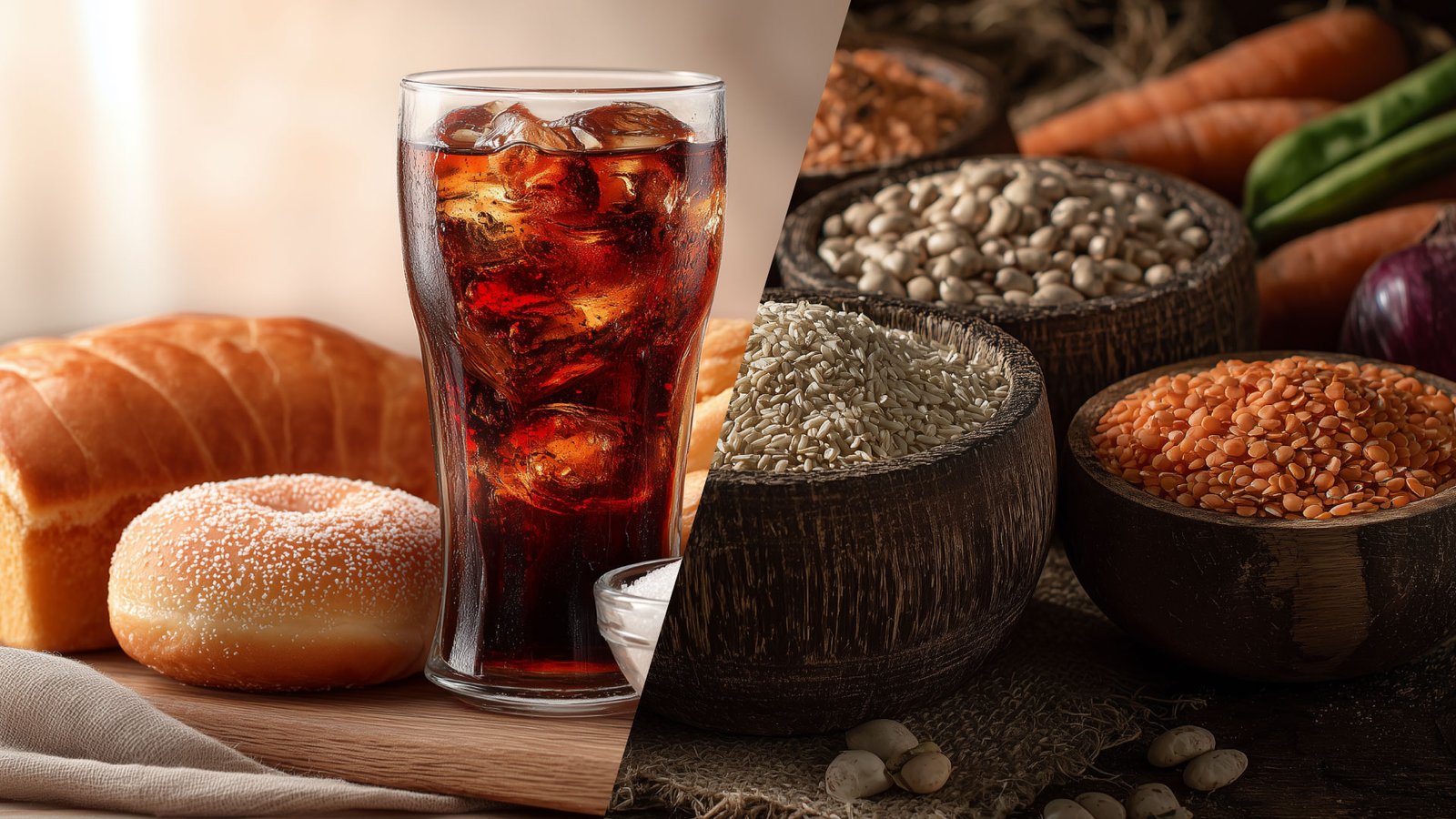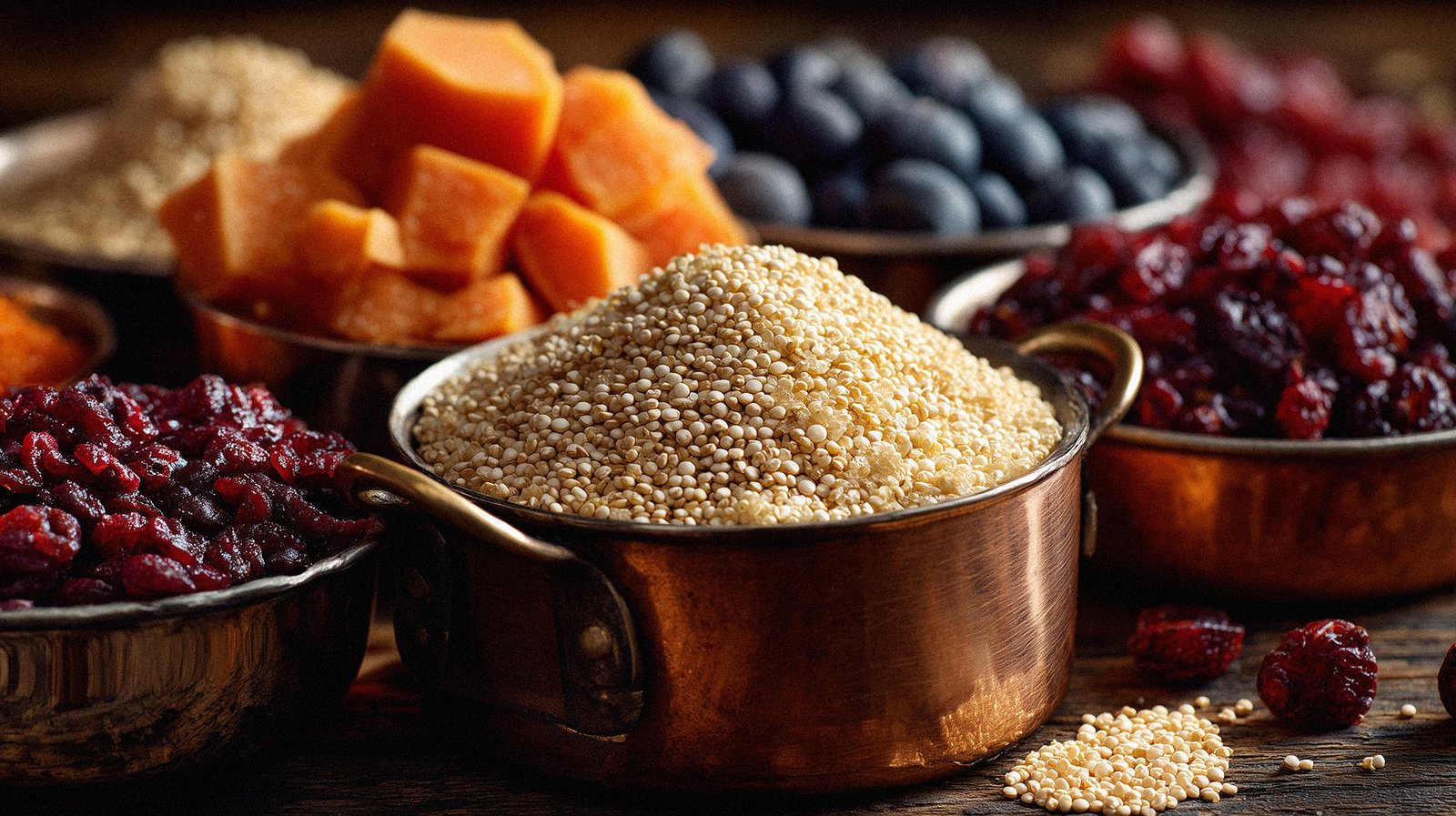Carbs: The Energy Source Your Body Handles Differently Now
Reading time 6 min

Reading time 6 min

If there’s one nutrient that’s been blamed for weight gain and cravings, it’s carbohydrates. But like fat and protein, carbs aren’t the problem – how you eat them is.
During the menopause transition, declining estrogen affects insulin sensitivity, blood sugar regulation, and how your body stores fat. That means the type and amount of carbohydrates you eat can make a big difference in how you feel1.
Why is fiber important for menopause transition?
Fiber is a type of carb that helps control blood sugar, supports gut health, and keeps you feeling full. As estrogen declines, fiber becomes a key tool to manage cravings, prevent insulin resistance, and support weight stability in menopause.
Carbohydrates are your body’s preferred source of quick energy. Once eaten, they break down into glucose, which fuels your brain, muscles, and organs. Your body stores extra glucose in the liver and muscles as glycogen, but that storage space is limited. Once full, excess glucose is converted into fat2. Hello, muffin top!
Monosaccharides and disaccharides are quickly digested and can cause rapid spikes in blood sugar. Think sugary drinks, white bread, and pastries.

Oligosaccharides and polysaccharides take longer to break down and provide more fiber, vitamins, and minerals. Think whole grains, legumes, vegetables, and fruits.
A word about fiber:
Fiber is a type of carbohydrate your body can’t digest. That might sound useless, but it’s incredibly helpful. It slows digestion, stabilizes blood sugar, supports your gut health, and helps you feel full longer – something most women need more of during the menopause transition3, 4.
Carbohydrates are your body’s preferred fuel source, especially for your brain, which needs about 130 grams of glucose daily just to function. But here’s what most women don’t realize: estrogen has been quietly helping your body handle carbs efficiently for decades5.
Estrogen enhances insulin sensitivity, helps muscles absorb glucose, and even suppresses appetite. It’s like having a metabolic assistant that keeps your blood sugar stable and your energy steady.
In your reproductive years, estrogen keeps insulin sensitivity high and glucose metabolism smooth. You could probably handle that afternoon cookie without much consequence. Standard guidelines of 45-65% of calories from carbs work well for most women, especially if they’re active6.
As estrogen fluctuates and declines during perimenopause, insulin sensitivity starts dropping. Many women notice they gain weight more easily, especially around the middle, even without eating more. Blood sugar crashes become more common, and that bagel-and-coffee breakfast might leave you ravenous by 10 AM7.
With estrogen’s protective effects gone in postmenopause, insulin resistance becomes more pronounced. The risk of developing type 2 diabetes increases, and visceral fat – which secretes inflammatory compounds that further impair insulin action – becomes more stubborn8.
The solution isn’t to eliminate carbs – your brain and muscles need them. It’s about choosing carbs that work with your changing biology, not against it.

If you eat ~1,800–2,000 kcal/day, aim for 45–55% of your calories from carbohydrates. That’s about 200–275g of carbs/day.
Fiber slows carbohydrate absorption, prevents blood sugar spikes, and helps with satiety. Aim for 25–30 grams of fiber daily, though some experts recommend even more (30–45g) for women in menopause transition10, 11. Some of the highest-fiber foods include:
Some women cut carbs so drastically that they’re miserable and eventually binge on everything they’ve been avoiding. The truth is, your body still needs carbohydrates, but it needs them in a smarter package. That morning oatmeal topped with berries and nuts isn’t just breakfast – it’s strategic fuel that works with your hormones, not against them.
The women who thrive during menopause aren’t the ones who eliminate entire food groups. They’re the ones who learn to work with their changing biology. They understand that the same quinoa salad that might have been a side dish in their 30s might need to be the star of their plate now. This isn’t about restriction – it’s about optimization. Your body is doing incredible things to adapt to hormonal changes. The least you can do is give it the right fuel to do its job well.
Dr. Jūra Lašas
1.
Bermingham, K. et al. Menopause is associated with postprandial metabolism, metabolic health and lifestyle: The ZOE PREDICT study. (2022) https://doi.org/10.1016/j.ebiom.2022.104303
2.
Clemente-Suárez, V. et al. The Burden of Carbohydrates in Health and Disease. (2022) https://doi.org/10.3390/nu14183809
3.
Reynolds, A. et al. Carbohydrate quality and human health: a series of systematic reviews and meta-analyses. (2019) https://doi.org/10.1016/S0140-6736(18)31809-9
4.
Khorasaniha, R. et al. Diversity of fibers in common foods: Key to advancing dietary research. (2023) https://doi.org/10.1016/j.foodhyd.2023.108495
5.
Sanchez, B. et al. Sex Differences in Energy Metabolism: A Female-Oriented Discussion. (2024) https://doi.org/10.1007/s40279-024-02063-8
6.
Gado, M. et al. Sex-based differences in insulin resistance. (2024) https://doi.org/10.1530/JOE-23-0245
7.
Lovejoy, J. et al. Increased visceral fat and decreased energy expenditure during the menopausal transition. (2008) https://doi.org/10.1038/ijo.2008.25
8.
Walton, C. et al. The effects of the menopause on insulin sensitivity, secretion and elimination in non‐obese, healthy women. (1993) https://doi.org/10.1111/j.1365-2362.1993.tb00792.x
9.
Sun, Q. et al. The different association between fat mass distribution and intake of three major nutrients in pre- and postmenopausal women. (2024) https://doi.org/10.1371/journal.pone.0304098
10.
Evans, C. Dietary fibre and cardiovascular health: a review of current evidence and policy. (2019) https://doi.org/10.1017/S0029665119000673
11.
Carlsen, H. et al. Dietary fiber – a scoping review for Nordic Nutrition Recommendations 2023. (2023) https://doi.org/10.29219/fnr.v67.9979